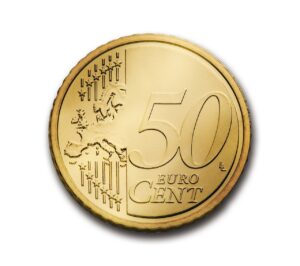
A 401(k) to Gold IRA rollover is a financial transaction that involves transferring funds from an existing 401(k) retirement account into an Individual Retirement Account (IRA) that is specifically designed to hold physical gold or other precious metals. This process allows individuals to diversify their retirement savings by investing in tangible assets like gold, silver, platinum, or palladium within the tax-advantaged structure of an IRA.
Here’s how the 401(k) to Gold IRA rollover process typically works:
Below is our 401k to gold IRA rollover guide. We made this guide as simple and straightforward as we could, so that even investors new to precious metals can benefit from this.
- Eligibility: You must be eligible for a rollover, which usually means you have an existing 401(k) or another qualified retirement account from a previous employer, as 401(k)s are typically employer-sponsored plans. You may also have an Individual Retirement Account (IRA) that you want to convert into a Gold IRA.
- Setting up a Gold IRA: To initiate the rollover, you will need to open a Gold IRA with a reputable financial institution or a precious metals custodian that specializes in such accounts. This custodian will help you set up the IRA and ensure it complies with IRS regulations.
- Rollover Process: Once the Gold IRA is established, you request a direct rollover from your 401(k) plan administrator to transfer the funds directly into your new Gold IRA. This is important to avoid penalties and taxes associated with early withdrawals or distribution.
- Investment in Precious Metals: After the funds are in your Gold IRA, you can work with your custodian to select the type and quantity of precious metals you wish to invest in. This typically includes options like gold coins, bars, or other approved forms of bullion.
- Storage and Management: The precious metals acquired for your Gold IRA will be securely stored by a custodian or a depository that specializes in precious metals storage. These facilities are typically insured and meet stringent security standards.
- Tax Benefits: Just like a traditional IRA, a Gold IRA offers tax advantages. Depending on the type of IRA you choose (traditional or Roth), your contributions may be tax-deductible, or your withdrawals may be tax-free during retirement.
It’s important to note that not all 401(k) plans allow for in-service distributions or rollovers while you are still employed, so you may need to wait until you leave your job or retire to initiate the rollover. Additionally, there may be fees associated with opening and maintaining a Gold IRA, and the IRS has rules and regulations governing the types of precious metals that can be held in these accounts.
How to Choose a Gold IRA Company to Work With
It’s important to understand the basics of investing with a precious metals company. That is why finding a reputable Gold IRA company to work with is essential to ensure the security and legitimacy of your investment. Here are some steps to help you find a good Gold IRA company:
- Research and Due Diligence:
- Start by conducting thorough research online to identify Gold IRA companies. You can use search engines, financial forums, and review websites to gather information.
- Look for companies with a strong online presence, professional websites, and clear information about their services.
- Check for customer reviews and testimonials to gauge the satisfaction of their clients.
- Verify Credentials:
- Ensure the company is properly licensed and registered. You can verify this with the appropriate regulatory authorities, such as the U.S. Securities and Exchange Commission (SEC) or relevant state agencies.
- Confirm that the company has experience and a good track record in handling Gold IRAs.
- Check Ratings and Accreditations:
- Look for ratings and accreditations from reputable sources. The Better Business Bureau (BBB), Business Consumer Alliance (BCA), and Trustpilot are some of the organizations that provide ratings and reviews of companies.
- Accreditation from industry organizations like the Professional Coin Grading Service (PCGS) or the Numismatic Guaranty Corporation (NGC) can be a positive sign.
- Transparency and Fees:
- Ensure that the company is transparent about its fees and charges. Be cautious of hidden fees that can erode your investment returns.
- Request a complete breakdown of costs, including custodial fees, storage fees, and any other charges.
- Expertise and Education:
- Look for a company that provides educational resources and information about Gold IRAs and precious metals investing. This shows a commitment to helping clients make informed decisions.
- The company’s representatives should be knowledgeable about IRS rules and regulations governing Gold IRAs.
- Storage Options:
- Inquire about the storage facilities used by the company to safeguard your precious metals. Reputable companies often use third-party depositories with high-security measures and insurance coverage.
- Ensure that the storage options offered align with your preferences and requirements.
- Customer Service:
- Test the company’s customer service by reaching out with questions or concerns. Responsiveness, professionalism, and willingness to address your inquiries are important factors to consider. A gold company with great customer service will understand how to start investing in gold as a new investor.
- Recommendations and Referrals:
- Seek recommendations from friends, family members, or financial advisors who have experience with Gold IRAs. Personal referrals can be valuable.
- Compare Multiple Companies:
- Don’t rush into a decision. Compare multiple Gold IRA companies, their offerings, and fees to make an informed choice.
- Legal and Compliance:
- Ensure that the company complies with all IRS regulations regarding Gold IRAs. They should be well-versed in the rules governing precious metals investments within IRAs.
- Consult with a Financial Advisor:
- Consider consulting with a qualified financial advisor or retirement planning expert who can provide guidance on selecting the right Gold IRA company based on your individual financial goals.
Why It Is Important to Invest in Gold
- Portfolio Diversification: Gold is often seen as an effective way to diversify an investment portfolio. Diversification can help reduce overall risk because the value of gold tends to move independently of traditional financial assets like stocks and bonds. When these assets decline in value, gold may potentially hold or increase in value, helping to offset losses in other parts of the portfolio.
- Safe Haven Asset: Gold is often considered a “safe haven” asset, meaning it can retain its value or appreciate during times of economic uncertainty, geopolitical instability, or financial crises. Investors may turn to gold as a store of value when they lack confidence in traditional currencies or financial markets.
- Inflation Hedge: Gold has historically served as a hedge against inflation. When the purchasing power of paper currencies decreases due to inflation, the value of gold often rises. Investors may turn to gold as a way to preserve their wealth during periods of rising prices.
- Store of Value: Gold has been used as a store of value for thousands of years. Its durability, scarcity, and acceptance worldwide contribute to its status as a reliable store of wealth.
- Liquidity: Physical gold, especially in the form of widely recognized coins and bars, is highly liquid. It can be easily bought and sold in various markets around the world, making it accessible to investors.
- No Counterparty Risk: When you own physical gold, you do not rely on the performance of a financial institution or a third party to fulfill your investment. This eliminates counterparty risk, which can be a concern when investing in certain financial instruments.
- Tangible Asset: Owning physical gold provides a tangible asset that you can hold, store, and see. Some investors appreciate the tactile nature of gold and the sense of security it provides.
- Long-Term Investment: Gold is often viewed as a long-term investment. It may not provide significant short-term gains, but it can help protect and preserve wealth over the long run.
Despite these advantages, it’s important to acknowledge that investing in physical gold also comes with considerations and potential drawbacks:
- Storage Costs: Storing physical gold may incur costs, such as fees for secure storage facilities or insurance.
- Lack of Income: Physical gold does not generate income like dividends from stocks or interest from bonds. Its value primarily comes from price appreciation.
- Volatility: While gold can serve as a hedge, its price can still be subject to volatility. It does not guarantee stable returns.
- Buy-Sell Spreads: When buying and selling physical gold, there can be spreads (the difference between the buying and selling prices) that affect your overall returns.
Before proceeding with a 401(k) to Gold IRA rollover, it’s advisable to consult with a financial advisor who specializes in retirement planning to ensure it aligns with your overall financial goals and that you understand the potential risks and benefits.
